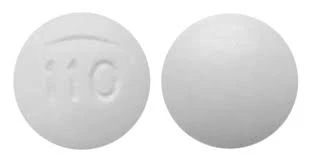- Afrikaans
- Albanian
- Amharic
- Arabic
- Armenian
- Azerbaijani
- Basque
- Belarusian
- Bengali
- Bosnian
- Bulgarian
- Catalan
- Cebuano
- Corsican
- Croatian
- Czech
- Danish
- Dutch
- English
- Esperanto
- Estonian
- Finnish
- French
- Frisian
- Galician
- Georgian
- German
- Greek
- Gujarati
- Haitian Creole
- hausa
- hawaiian
- Hebrew
- Hindi
- Miao
- Hungarian
- Icelandic
- igbo
- Indonesian
- irish
- Italian
- Japanese
- Javanese
- Kannada
- kazakh
- Khmer
- Rwandese
- Korean
- Kurdish
- Kyrgyz
- Lao
- Latin
- Latvian
- Lithuanian
- Luxembourgish
- Macedonian
- Malgashi
- Malay
- Malayalam
- Maltese
- Maori
- Marathi
- Mongolian
- Myanmar
- Nepali
- Norwegian
- Norwegian
- Occitan
- Pashto
- Persian
- Polish
- Portuguese
- Punjabi
- Romanian
- Russian
- Samoan
- Scottish Gaelic
- Serbian
- Sesotho
- Shona
- Sindhi
- Sinhala
- Slovak
- Slovenian
- Somali
- Spanish
- Sundanese
- Swahili
- Swedish
- Tagalog
- Tajik
- Tamil
- Tatar
- Telugu
- Thai
- Turkish
- Turkmen
- Ukrainian
- Urdu
- Uighur
- Uzbek
- Vietnamese
- Welsh
- Bantu
- Yiddish
- Yoruba
- Zulu
دېكابىر . 01, 2024 22:46 Back to list
disinfectants used in veterinary clinics
Disinfectants Used in Veterinary Clinics Ensuring Animal Health and Safety
In veterinary clinics, maintaining a clean and sanitary environment is paramount to ensuring the health and safety of both animals and humans. Disinfectants play a crucial role in this process, as they are responsible for eliminating harmful pathogens that can cause diseases in animals and, occasionally, humans. Understanding the types of disinfectants used in veterinary practices and their specific applications will help clinics maintain optimal hygiene standards.
Importance of Disinfection in Veterinary Clinics
Veterinary clinics are often exposed to various infectious agents, including bacteria, viruses, and fungi. These pathogens can be transmitted between animals, and in some cases, to humans through direct contact or through contaminated surfaces. Disinfectants are essential in breaking this chain of infection. They help prevent outbreaks of diseases, protect the health of animals, and ensure the safety of staff and clients visiting the clinic.
Types of Disinfectants Used
1. Quaternary Ammonium Compounds (Quats) These are among the most commonly used disinfectants in veterinary clinics. They are effective against a broad spectrum of bacteria and some viruses. Quats are favored for their ease of use, low toxicity, and ability to remain active on surfaces for extended periods. However, they may not be effective against non-enveloped viruses, such as parvovirus.
2. Phenolic Compounds Phenolic disinfectants are powerful agents that can eliminate bacteria, viruses, and fungi. They are particularly effective in environments where organic matter is present. However, their use is somewhat limited due to their potential toxicity to certain animals and their unpleasant odor. Veterinary clinics often use phenolic disinfectants in specific areas that may require more rigorous cleaning.
3. Chlorine Compounds Sodium hypochlorite, commonly known as bleach, is a widely used disinfectant in veterinary medicine. It is highly effective against a range of pathogens, including bacteria, fungi, and viruses. However, its strong odor and potential for irritating skin and mucous membranes require cautious handling and appropriate dilution before use.
disinfectants used in veterinary clinics

4. Hydrogen Peroxide This disinfectant is growing in popularity due to its effectiveness against a wide variety of pathogens and its environmental safety. Hydrogen peroxide serves as both a disinfectant and a deodorizer. It breaks down into water and oxygen, making it a more eco-friendly option for veterinary clinics.
5. Iodophors Iodine-based disinfectants, such as povidone-iodine, are effective against bacteria, fungi, and viruses. They are often used for skin disinfection during surgical procedures due to their rapid action and residual effects. However, the staining and potential irritation they cause can limit their use on certain surfaces.
Application and Best Practices
Proper application of disinfectants is critical for their effectiveness. Veterinary clinics should follow the manufacturer’s guidelines regarding contact time, dilution ratios, and surface compatibility. Additionally, it is essential to clean surfaces thoroughly before applying disinfectants since organic matter can reduce their efficacy.
Routine disinfection protocols should be established, especially in areas with high traffic or where animals are treated. This includes examining waiting areas, exam rooms, surgical suites, and kennels. By adhering to a consistent disinfection schedule, clinics can enhance their disease control measures significantly.
Conclusion
The use of disinfectants in veterinary clinics is vital for maintaining a safe and healthy environment for both animals and humans. With a variety of disinfectants available, clinics must select the appropriate products for their specific needs, ensuring proper protocols are in place for effective application. As we continue to prioritize hygiene in veterinary practices, the role of disinfectants will remain central to safeguarding animal health and preventing the spread of infectious diseases.
-
Guide to Oxytetracycline Injection
NewsMar.27,2025
-
Guide to Colistin Sulphate
NewsMar.27,2025
-
Gentamicin Sulfate: Uses, Price, And Key Information
NewsMar.27,2025
-
Enrofloxacin Injection: Uses, Price, And Supplier Information
NewsMar.27,2025
-
Dexamethasone Sodium Phosphate Injection: Uses, Price, And Key Information
NewsMar.27,2025
-
Albendazole Tablet: Uses, Dosage, Cost, And Key Information
NewsMar.27,2025













